- Home
- John Updike
Higher Gossip Page 31
Higher Gossip Read online
Page 31
El Greco, in the ambitious Adoration of the Name of Jesus (c. 1577–79), hasn’t yet solved the problem of weight for himself; the sharklike mouth of a teeming hell, the countless heads of the redeemed like a roadway of round cobblestones, the sickly-white profile of Philip II (who was still being courted by the painter) are dutiful renditions, filled in without flair. The sky above, however, populated by baroquely foreshortened angels kneeling on rock-solid clouds, composes more happily, inviting the eye to travel toward the mystic name. In his much-admired signature piece, The Burial of the Count of Orgaz (1586–88), still in Toledo but prominent in the catalogue, the heavenly upper half is more persuasive than the overly literal, face-by-face depiction of the funeral ceremony. Even in the clumsy Saint Francis Receiving the Stigmata, the free-flowing clouds attract our eye. El Greco was at home in the clouds, their visual tumult and their release from the spatial confinements of gravity. His jagged skies feel on the verge of lightning and of the darkness that preceded the veil of the temple being split in two.
At the Met, in the third chamber, our eyes greet at last a masterpiece, echt El Greco: The Crucifixion with Two Donors (c. 1580). A slender silvery flame of skin, Christ rolls his eyes and his nail-pierced hands upward; he is flying, against a background of black cloud, leaving below the two reverent donors, only their torsos in view as they stand on the unseen earth. Against precedent (as the catalogue essay points out), there is no trace of landscape. Nor are there the usual mourners, or attending angels, or any sense, as there is in the Michelangelo chalk drawing The Crucifixion (1538–41), of any pain or muscular resistance, or, as in a Cellini marble sculpture (1556–62), of sagged weight, relaxed in the surrender of death. This Christ spectacularly lives, in a transmaterial realm of blanched flesh lit from within, closely looming skies, and minimal terrestrial traces. To this sublime realm belong the paired portraits Mary Magdalene in Penitence and Saint Peter in Penitence, the rather epicene Christ Carrying the Cross (the catalogue points out that the cross seems weightless and “the eloquently drawn hands … do not so much grasp as delicately embrace” it), the stagy but eloquent Saint Dominic in Prayer, and The Holy Family, marred by one of the ugliest Christ children ever shown mouthing a breast. All are dated in the 1580s.
In the twenty-five years left to him, El Greco extended his brand of mannerism deeper into the individuality and eccentricity that endears him, with his distortions, nervous brushwork, and unmodulated sharp colors, to the modern spirit. Soaring operatic concoctions like The Annunciation (c. 1597–1600) and The Virgin of the Immaculate Conception (1608–13) are in their way stupendous, though the vapid expressions and pointy noses of his long-necked females give their cosmic occasions a flavor of Watteauesque fête. The Resurrection (late 1590s), very narrow for its height, has a slender, red-bearded Christ whose levitation out of the tomb knocks a crowd of Roman soldiers clad in skintight monochrome tunics flat on their backs; the viewer could more easily assimilate the wild tumble of limbs if Christ were not wearing a slight smirk and gesturing like a debonair stuntman saying, “What do you think of that!”
The Adoration of the Shepherds, in its version of 1612–14, is one of the last paintings from El Greco’s hand and ingeniously uses the tiny body of the newborn Jesus as the main source of illumination, so that all the witnesses, including two angels and a flock of cherubs above, bask in its glow; the ingenious conception loses the intimacy of the manger. In such details as the arm of the tallest shepherd here, and the side figures of Laocoön, and, most boldly, the spectral nudes of The Opening of the Fifth Seal (1608–14), anatomical truth is brushed aside; these wavery limbs and dwindled heads have less to do with the human body than with an idea of bodies, whose basic reality lies behind or beyond their appearance: white shadows in a cave where flares of neon color patch a basic grisaille. Stiff and shiny robes, smeared with white shine, take on the self-importance of clerical vestments—see the left-hand figure in The Opening of the Fifth Seal, the hasty Marriage of the Virgin (c. 1613–14), and the nearly Daliesque Visitation (early 1610s), which seems less the meeting of two women than of two hooded robes.
El Greco, The Crucifixion with Two Donors, c. 1580. Oil on canvas. (Photo Credit Ill.3)
Then there are the portraits, some of them superb: the much-reproduced bespectacled cardinal of 1600–1; the agreeably misty, wispy Elderly Gentleman (late 1580s or 1590s); the stabbing, near-pointillistic Antonio de Covarrubias (about 1600); the early Giulio Clovio (c. 1571–72), with a golden crust of facial rework à la Rembrandt; the gallant yet fragile Nobleman with His Hand on His Chest (c. 1583–85); and the startling Lady in a Fur Wrap (late 1570s), a fur-clad, ivory-faced beauty staring out with her huge dark eyes at the painter as if to recall him from otherworldly visions. Indeed, the authenticity of the attribution to El Greco has been questioned. She is the only female in this sober room of black-suited grandees and robed, rueful clerics. Perhaps for this reason, a woman in the crowd of previewers confided, “This to me is the deadest room in the show.” With its submission to close observation and its concern with individual personality the room was the least El Grecoesque; like the religious paintings of Goya, the portraits remind us that their visionary creator was also a practitioner, a professional adept.
In another passing comment, an acquaintance, a distinguished painter and caricaturist, told me that he, though an atheist, now found himself, after this show, willing to be converted. Was my own relative lack of enthusiasm, I wondered, a product of a stubborn, hard-shell Protestantism? The catalogue, in its essay by David Davies, briskly sketches the Catholic Counter-Reformation, whose main cause, of course, was the Protestant Reformation. Luther and, more rigorously, Calvin dismissed a vast intercessory apparatus that included the Pope, the supernatural role of the priest during Mass, the transubstantive nature of the Eucharist, confession, absolution, and the selling of indulgences to lessen a sinner’s posthumous term in purgatory. In place of all this, Protestantism substituted sola fide, the Holy Bible, long sermons, and bare church walls. Roman Catholicism answered with its own simplifications and inwardness, notably a concentration upon mystical union with God through Christ. “Thus,” Davies writes, “the narrative cycle of Christ’s life was subordinated to the specifically salvific, to the achievement of salvation. Scenes of his infancy, passion and resurrection, rather than of his ministry, predominated in Catholic prayers and writings.” When Christendom split in two, both sides sought higher, purer ground in subjective experience, as the tide of materialism—with it, science and atheism—inexorably rose, claiming the universe.
In Spain, the union with Christ took on erotic qualities derived, in part, from the love poetry of the Moors. Saint John of the Cross, the greatest of the Counter-Reformation poets, wrote of a night where, “inflamed by love’s desires,” he ventured out to a rendezvous “Amado con Amada, Amada en el Amado transformada,” which my English translation, without the convenience of genderized nouns, renders as “Lover with Mistress, the Mistress transformed into the Lover!” Something of this ecstatic androgyny permeates El Greco’s images of Christ, with their long-fingered hands, airy gestures, and fine-grained pallor. What I miss in them is a sense of God Incarnate, a walking-around Jesus, a man among others, as we see in Giotto and Titian, in Rembrandt’s etchings and Dürer’s woodcuts. El Greco’s divine personages, once he has reached his stylistic maturity, are like movie stars, perfect and untouchable. His Baby Jesus is a lightbulb. His art has the slickness of any art that doesn’t subject itself to a constant reality check.
El Greco solved, in singular fashion, the problem of weight. His supernatural bodies lift free of gravity, but at a cost: they seem insubstantial—too smooth, too rapt, too willowy, too elongated. They exist, but up there, in another world, with little of, say, Giovanni Bellini’s calm, gem-bright practicality of draftsmanship. True to his origins as an icon painter, El Greco provides votive images, images that draw our attention out of ourselves, in an aspiring direction. But only occasionally—as
in the fiery, frowning, famous Saint Jerome as a Scholar (c. 1600–14), or in the freely painted canvas of a gaunt, yellow-robed Saint Peter (early 1610s), with his loosely held keys to the kingdom, his bony other hand, his touching little bare feet, and his rueful oblique gaze—do we feel the pinch of the human bind.
More Light on Delft
PIETER DE HOOCH, 1629–1684, at the Wadsworth Atheneum, Hartford, Connecticut, December 17, 1998–February 27, 1999.
Pieter de Hooch, though often cited in lists of Dutch painters, was never the exclusive subject of a show until one this fall, which enjoyed record-breaking attendance in its ten weeks at London’s Dulwich Picture Gallery before coming, with the winter, to the Wadsworth Atheneum in Hartford. His reputation has long been associated with that of his contemporary Vermeer. When, in 1765, a painting of his was offered for sale in Amsterdam, it was described as “zoo goet als de Delfze van der Meer”—“as good as Vermeer of Delft”—and the nineteenth-century French critic Théophile Thoré, in reviving Vermeer’s reputation, attributed to him five paintings by de Hooch. It is true that both painters portray intimate domestic interiors of a modest scale and quiet mood, but de Hooch suffers cruelly from the comparison. His brushstrokes are scratchy, his colors brownish and murky, and his compositions haphazard when viewed with Vermeer’s pellucid and exquisitely rigorous canvases in mind. Compared with Vermeer, de Hooch does not draw well, let alone paint with the younger man’s serene rapture of weightless touch and opalescent color. For Vermeer, as for very few artists prior to the Impressionists, painting is not just the method but the subject, a topic explored in such dazzling visual essays as the reflections on a brass water pitcher and basin, the shadows falling across the shallow ridges of an unscrolled map, the photographically exact yet rather freely brushed pattern of a folded and foreshortened Oriental rug, the liquid spill of a lacemaker’s red and white threads, the cool folds and dimples of a silk skirt, the delicately muted and flattened colors of a picture on a wall—a picture within a picture to tell us that this too is a picture. The science of perspective and the invention of the camera obscura opened to Vermeer, in this era of burgeoning astronomy and microscopy, a world of optical truth to which both the painter and his human subjects are in a sense transitory visitors, accessories to the transcendent process whereby light defines objects.
With de Hooch the topic is less the seeing than what we see—homely Dutch folk and their furniture, their rooms, the cityscape glimpsed over their shoulders. Thirty-eight of his paintings fill two big rooms of the Wadsworth (it and the Dulwich Gallery, the catalogue proudly points out, are equally venerable—“the first public museums to open in their respective countries”), and they reveal not only where de Hooch falls short of Vermeer but where he goes beyond him, providing what Vermeer in his great rarefaction does not. Children, for one thing. Though Vermeer had at least eleven, not a single child appears in a painting by him, perhaps because children could not remain still long enough. On the other hand, a high proportion of the de Hooch canvases on display at Hartford contain children—a bit stiffly and incidentally in Mother and Child with a Serving Woman Sweeping (c. 1655–57), Two Women and a Child in a Courtyard (c. 1657–58), and A Woman and Child in a Bleaching Ground (c. 1657–59), and with an affecting tenderness and concentration in Woman and Child in an Interior (c. 1658) and A Woman with a Baby in Her Lap, and a Small Child (1658). The tiny hands in the latter—the baby’s curled in drowsy relaxation on its mother’s lap, the child’s grasped around a complaisantly limp lapdog—are painted with a tactful skill de Hooch brought rarely to human anatomy. The sunlight caught in the backlit woolly hair of the child in The Bedroom (c. 1658–60) is one of de Hooch’s most admired effects, tellingly enlarged in the catalogue, and A Mother and Child with Its Head in Her Lap (c. 1658–60), showing the mother searching her docile child’s head for lice, is one of his most loved and atmospheric interiors. He does not let us forget that a focus of these cozy, clean, sun-washed Dutch interiors is the nurture and protection of children; it is their pets and toys (including a colf club and ball) that interrupt the swept severity of the tile floors.
De Hooch, A Mother and Child with Its Head in Her Lap, c. 1658–60. Oil on canvas. (Photo Credit Ill.4)
All these paintings—and the bulk of de Hooch’s best—come from the period when, by the spotty records, he lived in Delft. Born in Rotterdam in 1629, he learned and practiced his trade there until his marriage to a Delft woman in 1654 cemented his move to that city, a venerable and economically declining center of tapestry ateliers, breweries, and delftware factories. This modest town of twenty thousand people housed, during the 1650s, a boom in genre painting, including such artists as Gerard ter Borch, Carel Fabritius, and Jan Steen, as well as Vermeer and de Hooch. Though no records remain of interactions between the latter two, it seems unlikely that in circles so small there were none. De Hooch, three years older, may have influenced Vermeer to turn from the large mythological subjects of his earliest canvases to smaller-scaled realism. Around 1660, de Hooch moved from Delft to the metropolis of Amsterdam, where the patronage was richer, and his paintings became more elaborate and ostentatiously refined.
But while in Delft he captured qualities excluded from Vermeer’s paradise of jewel-like moments. The son of a bricklayer, de Hooch gives us the textures underfoot. The floor tiles, arrestingly smoothed to a pattern of alternating black and white in Vermeer, in de Hooch paintings wear their uneven glazing, their raised edges catching the light. His bricked courtyards have the slight wave of uneven earth beneath, and his whitewashed walls bear cracks and rough patches. When de Hooch gets to Amsterdam, he exults in walls of gilt leather, whose embossed and glinting arabesques, in such ambitious canvases as A Party of Figures Around a Table (c. 1663–65) and Merry Company (c. 1663–65), all but overpower the rather pallidly projected merry companies. The human figures in the Amsterdam pictures in general lack the warmth of individuality, as if he did not know them the way he did his neighbors in Delft; he visits their houses as a social inferior and is encouraged to focus on their conspicuous possessions. A Seated Couple with a Standing Woman in a Garden (c. 1663–65) strikingly highlights the sunstruck façade of a small Amsterdam house—brick by brick and pane by pane, vivid as an architect’s projection—and leaves the tête-à-tête in shadow and its flirting couple virtually faceless. De Hooch’s sense of human drama is vague and elastic enough, frequent pentimenti reveal, to permit him to paint people in and out quite late in the stages of composition. In A Woman Drinking with Two Men, and a Serving Woman (c. 1658), the serving woman was added to fill the unpopulated right half of the canvas after the completion of the floor tiles, which show through her feet and skirt; in A Music Party in a Hall (c. 1663–65), a black servant attending a viola-da-gamba player was painted out, leaving a wineglass being passed between them suspended in an awkward toast. Even if de Hooch did not execute these later revisions, something unresolved in his initial composition opened the way for the muddle. Some of his figures have a Magritte-like air of floating disconnection. The viewer is frequently struck by vacuously dark stretches in his canvases, whose occupants seem semi-lost in spaces too big for them.
Perhaps space is the secret topic that concerned de Hooch. If Vermeer was the much superior director of human drama, even when only one woman is on the canvas, de Hooch gives us an aspect of Delft that Vermeer, save in his two great cityscapes, reduces to a creamy light evenly streaming through a window: the outdoors. De Hooch’s sunlight is tawny, one with his orange tiles, baked bricks, and varnished cabinets. He takes us out into the paved courtyards where much of Delft’s domestic work was done; he shows us a dirt alley blanketed with laundry (A Woman and Child in a Bleaching Ground) and depicts the makeshift wooden sheds and lattices that pieced out this city of brick and tile (A Courtyard in Delft with a Woman and Child, 1658). Further, his interiors have long perspectives, one room opening into another where a window in turn affords a glimpse of sunlit scenery. The two of his paintings
with children already mentioned as most affecting share this layout, and in the slightly later Bedroom the interplay between outdoor and indoor illumination approaches the virtuosic. There is the child’s hair and figure, backlit by the daylight of a vista seen through two doorways, and there is a tawny double window on the left, illumining the mother on the left, planting a rectangular highlight on a chamberpot at her feet, and drawing a trapezoidal shadow from the painting above the doorway. The watery band of light—a ghost refraction—thrown diagonally through the window is well observed, and possibly never before registered in any painting.
The sense of healthy interchange between outdoors and indoors, between leafy growths and buffed artifacts, helps to create the airy intimacy of A Mother and Child with Its Head in Her Lap, where open doors on the left disclose a sunny exterior and open curtains on the right a pillowed bed—a stereoscope of housed comfort. (A Courtyard in Delft with a Woman and Child offers an even more distinctly double view, as if each eye is being offered a separate channel.) In his Amsterdam phase, the far doorway giving onto a sunny vista became a compulsive de Hooch signature; in one painting of the magnificent new town-hall interior (The Interior of the Burgomasters’ Council Chamber in the Amsterdam Town Hall with Visitors, c. 1663–65), he violated the actual design to create such a motif, and in another (A Couple Walking in the Citizens’ Hall of the Amsterdam Town Hall, c. 1663–65) a nineteenth-century restorer did it for him, adding an imaginary room with checkerboard floor and bright window to make the painting, presumably, more de Hoochian. But the distinguished passage of this painting is the beautifully hovering patch of sunshine which, falling through an unseen window, splashes the base of a great pilaster and bounces—it or a brother beam—across the chests of the strolling couple. Two Amsterdam paintings not in the show but reproduced in the catalogue, Woman Lacing Her Bodice Beside a Cradle (c. 1661–63) and A Boy Handing a Woman a Basket in a Doorway (c. 1660–63), show his indoor-outdoor fugue to exquisite, enamelled effect. Such canvases, though more dryly detailed than any by Vermeer, have been lifted above the anecdotal interest of genre scenes to a plane of pure painting—“pure” for lack of a juster word to denote painting as disinterested exploration and meditation. The splash of golden light adds almost nothing to the republican splendor of the town hall or the picturesque character of the couple; it adds a good deal to our sense of time and of the universe.

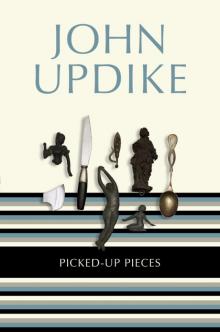 Picked-Up Pieces: Essays
Picked-Up Pieces: Essays Bech: A Book
Bech: A Book Roger's Version: A Novel
Roger's Version: A Novel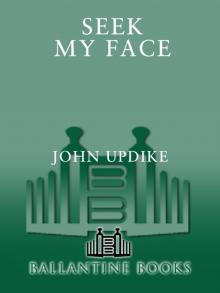 Seek My Face
Seek My Face The Carpentered Hen
The Carpentered Hen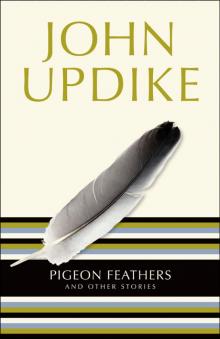 Pigeon Feathers: And Other Stories
Pigeon Feathers: And Other Stories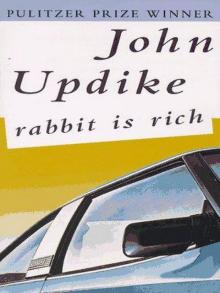 Rabbit Is Rich
Rabbit Is Rich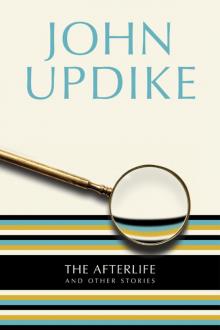 The Afterlife: And Other Stories
The Afterlife: And Other Stories Rabbit at Rest
Rabbit at Rest The Witches of Eastwick
The Witches of Eastwick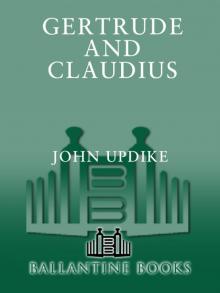 Gertrude and Claudius
Gertrude and Claudius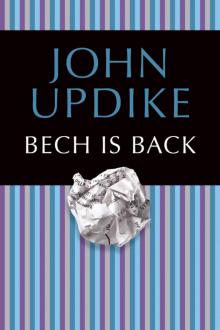 Bech Is Back
Bech Is Back Hub Fans Bid Kid Adieu: John Updike on Ted Williams
Hub Fans Bid Kid Adieu: John Updike on Ted Williams Marry Me: A Romance
Marry Me: A Romance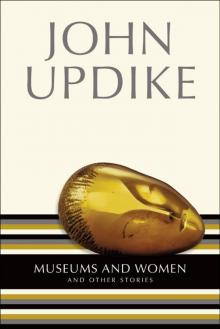 Museums and Women: And Other Stories
Museums and Women: And Other Stories My Father's Tears and Other Stories
My Father's Tears and Other Stories Collected Poems, 1953-1993
Collected Poems, 1953-1993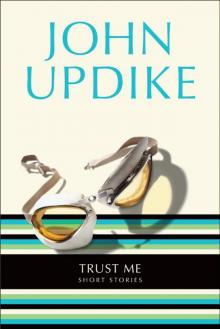 Trust Me: Short Stories
Trust Me: Short Stories Odd Jobs: Essays and Criticism
Odd Jobs: Essays and Criticism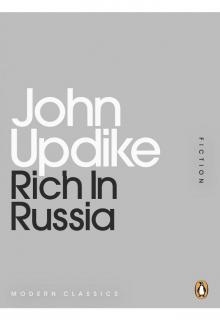 Rich in Russia
Rich in Russia Higher Gossip: Essays and Criticism
Higher Gossip: Essays and Criticism The Widows of Eastwick
The Widows of Eastwick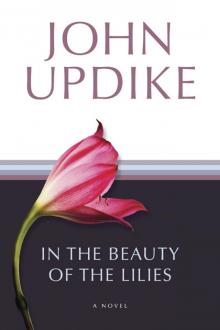 In the Beauty of the Lilies
In the Beauty of the Lilies Rabbit, Run
Rabbit, Run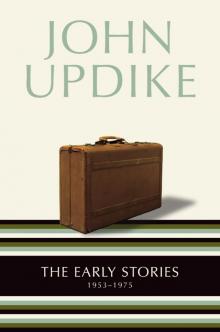 The Early Stories: 1953-1975
The Early Stories: 1953-1975 Rabbit Redux
Rabbit Redux S.
S.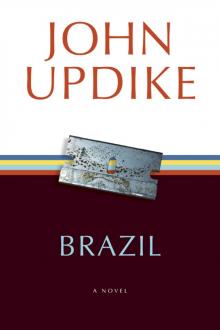 Brazil
Brazil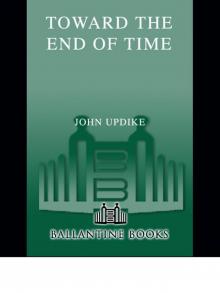 Toward the End of Time
Toward the End of Time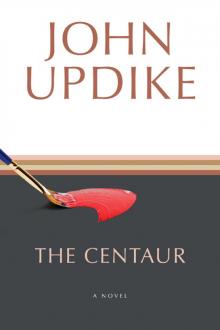 The Centaur: A Novel
The Centaur: A Novel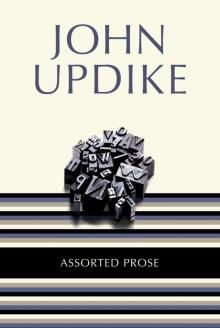 Assorted Prose
Assorted Prose Memories of the Ford Administration
Memories of the Ford Administration Terrorist
Terrorist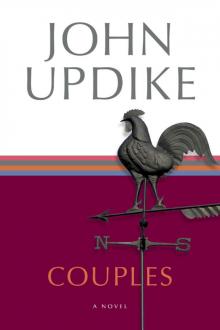 Couples: A Novel
Couples: A Novel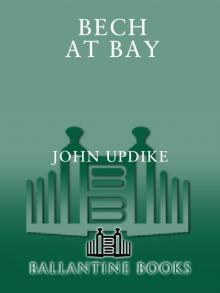 Bech at Bay
Bech at Bay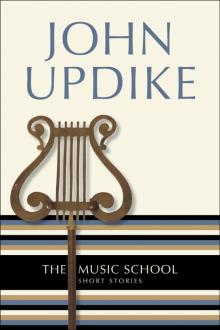 The Music School: Short Stories
The Music School: Short Stories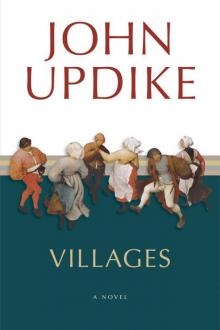 Villages
Villages S
S Roger's Version
Roger's Version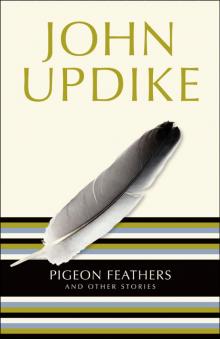 Pigeon Feathers
Pigeon Feathers Higher Gossip
Higher Gossip Rabbit Redux r-2
Rabbit Redux r-2 Memories of the Ford Administration: A Novel
Memories of the Ford Administration: A Novel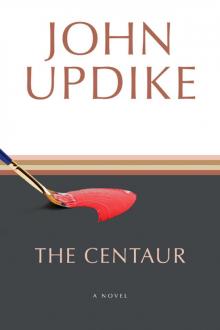 The Centaur
The Centaur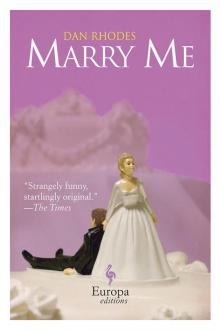 Marry Me
Marry Me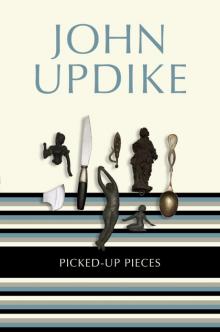 Picked-Up Pieces
Picked-Up Pieces Bech
Bech Rabbit Remembered
Rabbit Remembered Trust Me
Trust Me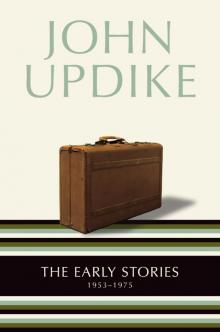 The Early Stories
The Early Stories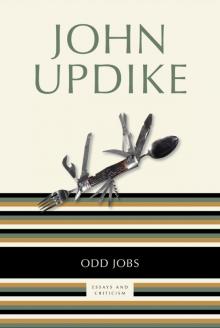 Odd Jobs
Odd Jobs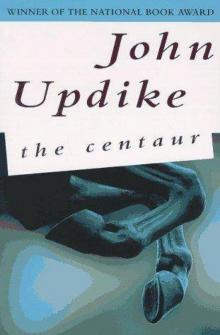 The Centaurus
The Centaurus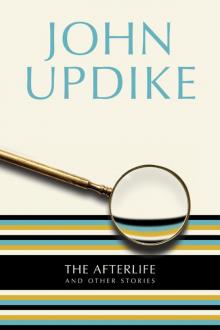 The Afterlife
The Afterlife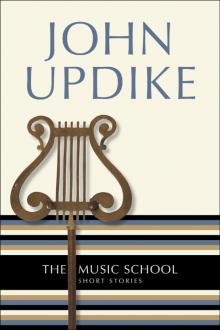 The Music School
The Music School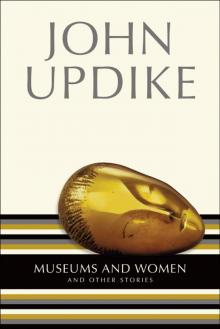 Museums and Women
Museums and Women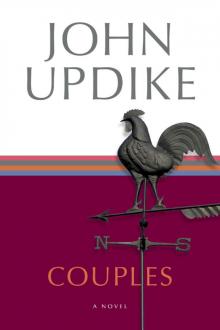 Couples
Couples